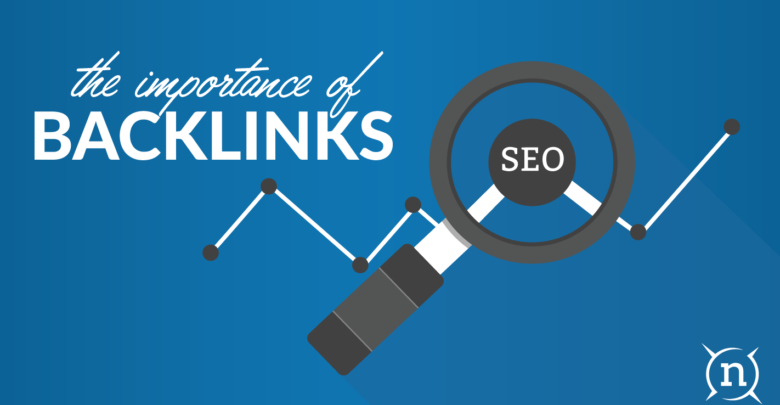
What are “backlinks”? Backlinks are links that are directed towards your website. Also knows as Inbound links (IBL’s). The number of backlinks is an indication of the popularity or importance of that website. Backlinks are important for SEO because some search engines, especially Google, will give more credit to websites that have a good number of quality backlinks, and consider those websites more relevant than others in their results pages for a search query. Guest posting list.
When search engines calculate the relevance of a site to a keyword, they consider the number of QUALITY inbound links to that site. So we should not be satisfied with merely getting inbound links, it is the quality of the inbound link that matters.
A search engine considers the content of the sites to determine the QUALITY of a link. When inbound links to your site come from other sites, and those sites have content related to your site, these inbound links are considered more relevant to your site. If inbound links are found on sites with unrelated content, they are considered less relevant. The higher the relevance of inbound links, the greater their quality.
For example, if a webmaster has a website about how to rescue orphaned kittens, and received a backlink from another website about kittens, then that would be more relevant in a search engine’s assessment than say a link from a site about car racing. The more relevant the site is that is linking back to your website, the better the quality of the backlink.
Search engines want websites to have a level playing field, and look for natural links built slowly over time. While it is fairly easy to manipulate links on a web page to try to achieve a higher ranking, it is a lot harder to influence a search engine with external backlinks from other websites. This is also a reason why backlinks factor in so highly into a search engine’s algorithm. Lately, however, a search engine’s criteria for quality inbound links has gotten even tougher, thanks to unscrupulous webmasters trying to achieve these inbound links by deceptive or sneaky techniques, such as with hidden links, or automatically generated pages whose sole purpose is to provide inbound links to websites. These pages are called link farms, and they are not only disregarded by search engines but linking to a link farm could get your site banned entirely.
Another reason to achieve quality backlinks is to entice visitors to come to your website. You can’t build a website, and then expect that people will find your website without pointing the way. You will probably have to get the word out there about your site. One way webmasters got the word out used to be through reciprocal linking. Let’s talk about reciprocal linking for a moment.
There is much discussion in these last few months about reciprocal linking. In the last Google update, reciprocal links were one of the targets of the search engine’s latest filter. Many webmasters had agreed upon reciprocal link exchanges, in order to boost their site’s rankings with the sheer number of inbound links. In a link exchange, one webmaster places a link on his website that points to another webmasters website, and vice versa. Many of these links were simply not relevant and were just discounted. So while the irrelevant inbound link was ignored, the outbound links still got counted, diluting the relevancy score of many websites. This caused a great many websites to drop off the Google map.
We must be careful with our reciprocal links. There is a Google patent in the works that will deal with not only the popularity of the sites being linked to, but also how trustworthy a site is that you link to from your own website. This will mean that you could get into trouble with the search engine just for linking to a bad apple. We could begin preparing for this future change in the search engine algorithm by being choosier with which we exchange links right now. By choosing only relevant sites to link with, and sites that don’t have tons of outbound links on a page or sites that don’t practice black-hat SEO techniques, we will have a better chance that our reciprocal links won’t be discounted.
Many webmasters have more than one website. Sometimes these websites are related, sometimes they are not. You have to also be careful about interlinking multiple websites on the same IP. If you own seven related websites, then a link to each of those websites on a page could hurt you, as it may look like to a search engine that you are trying to do something fishy. Many webmasters have tried to manipulate backlinks in this way, and too many links to sites with the same IP address is referred to as backlink bombing.
One thing is certain: interlinking sites doesn’t help you from a search engine standpoint. The only reason you may want to interlink your sites in the first place might be to provide your visitors with extra resources to visit. In this case, it would probably be okay to provide visitors with a link to another of your websites, but try to keep many instances of linking to the same IP address to a bare minimum. One or two links on a page here and there probably won’t hurt you.
There are a few things to consider when beginning your backlink building campaign. It is helpful to keep track of your backlinks, to know which sites are linking back to you, and how the anchor text of the backlink incorporates keywords relating to your site. A tool to help you keep track of your backlinks is the Domain Stats Tool. This tool displays the backlinks of a domain in Google, Yahoo, and MSN. It will also tell you a few other details about your website, like your listings in the Open Directory, or DMOZ, from which Google regards backlinks highly important; Alexa traffic rank, and how many pages from your site that have been indexed, to name just a few.
Another tool to help you with your link building campaign is the Backlink Builder Tool. It is not enough just to have a large number of inbound links pointing to your site. Rather, you need to have a large number of QUALITY inbound links. This tool searches for websites that have a related theme to your website which are likely to add your link to their website. You specify a particular keyword or keyword phrase, and then the tool seeks out related sites for you. This helps to simplify your backlink building efforts by helping you create quality, relevant backlinks to your site and making the job easier in the process.
There is another way to gain quality backlinks to your site, in addition to related site themes: anchor text. When a link incorporates a keyword into the text of the hyperlink, we call this quality anchor text. A link’s anchor text may be one of the under-estimated resources a webmaster has. Instead of using words like “click here” which probably won’t relate in any way to your website, using the words “Please visit our tips page for how to nurse an orphaned kitten” is a far better way to utilize a hyperlink. A good tool for helping you find your backlinks and what text is being used to link to your site is the Backlink Anchor Text Analysis Tool. If you find that your site is being linked to from another website, but the anchor text is not being utilized properly, you should request that the website change the anchor text to something incorporating relevant keywords. This will also help boost your quality backlinks score.
Building quality backlinks is extremely important to Search Engine Optimization, and because of their importance, it should be very high on your priority list in your SEO efforts. We hope you have a better understanding of why you need good quality inbound links to your site and have a handle on a few helpful tools to gain those links.




